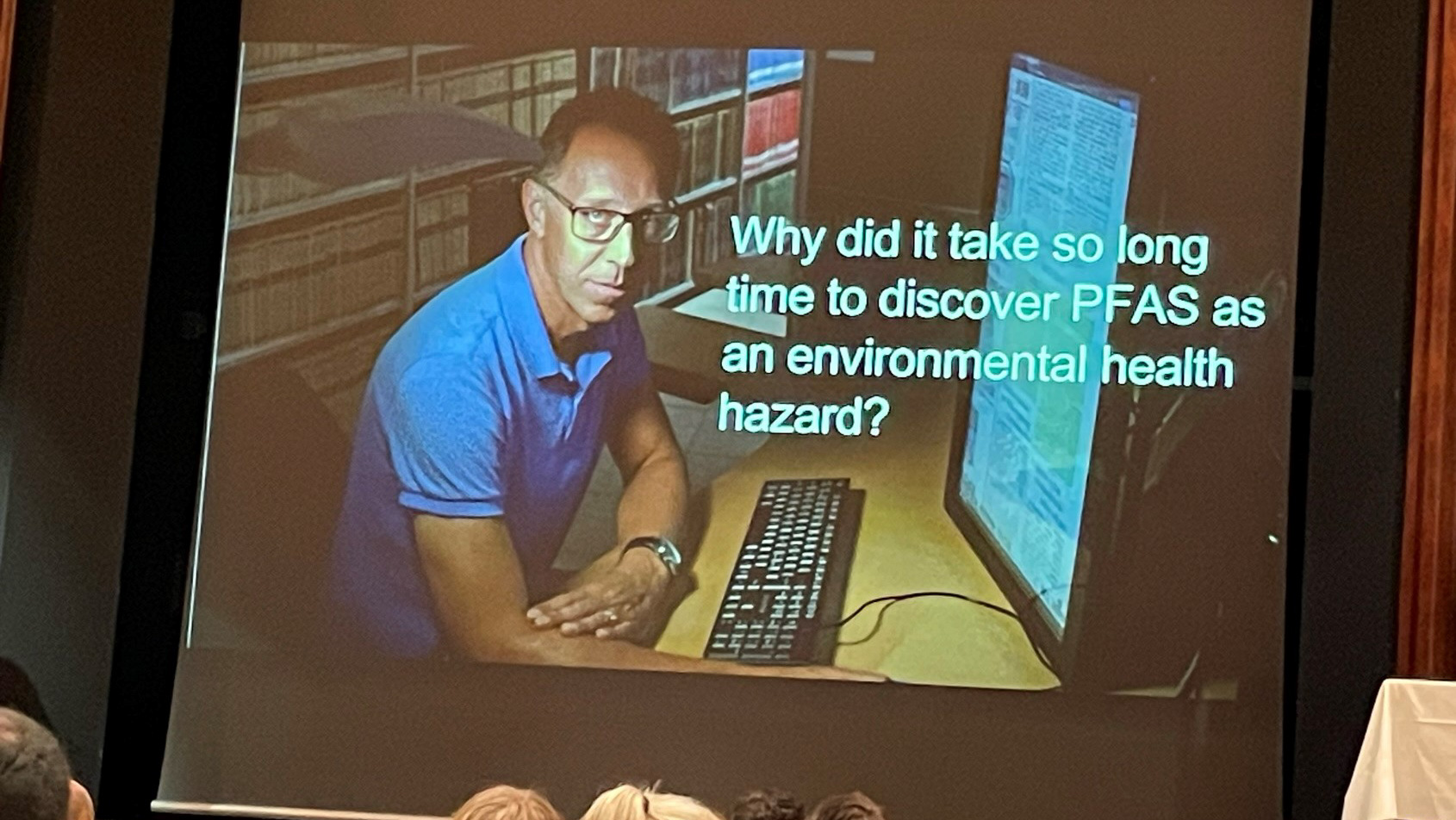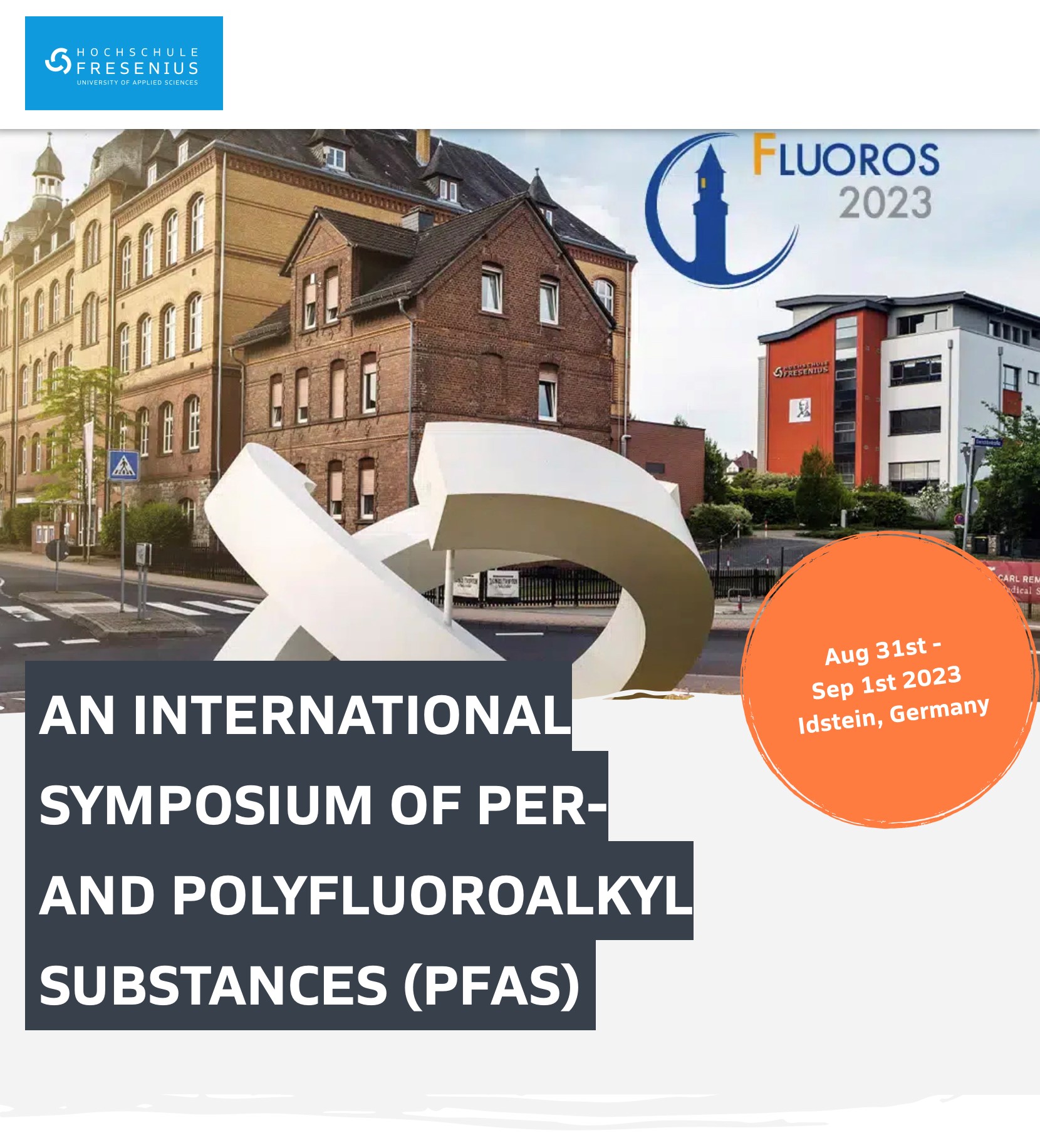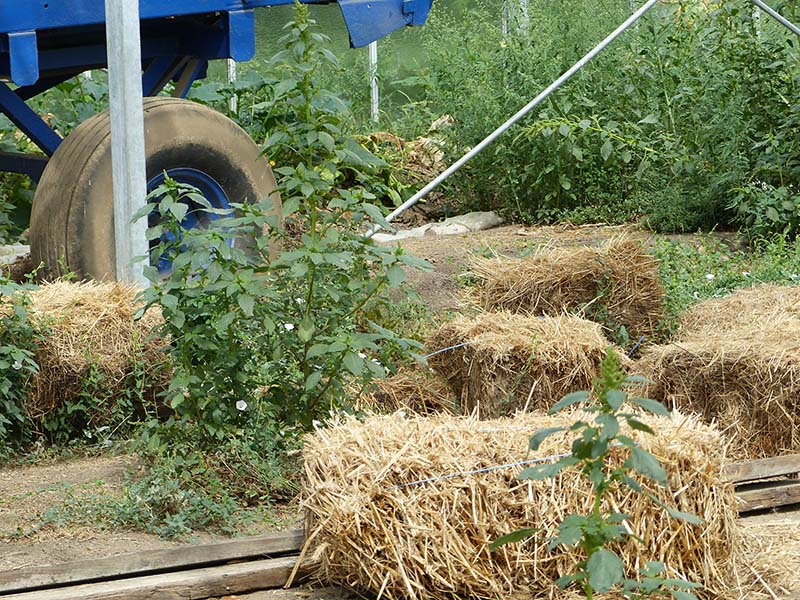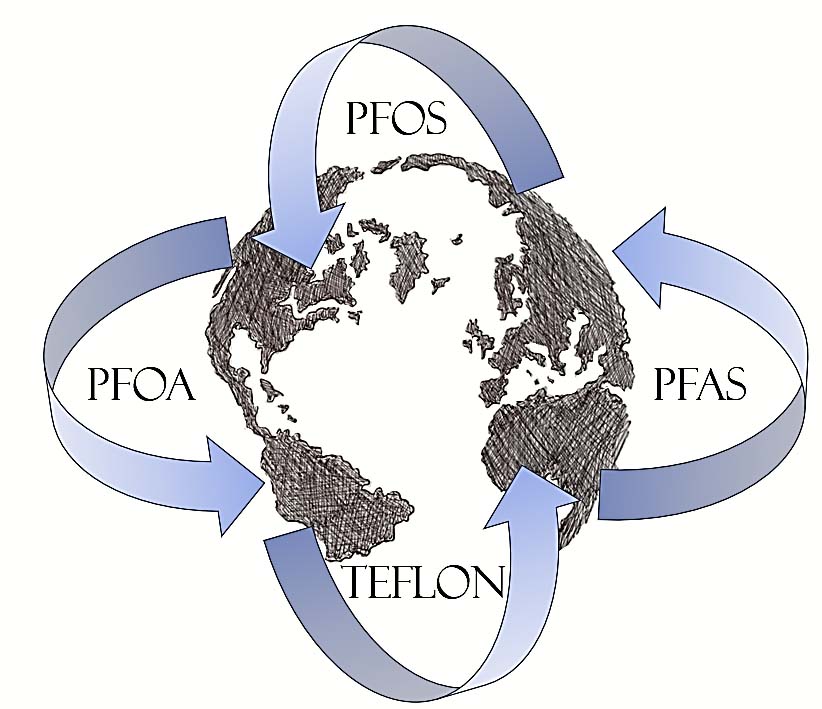International PFAS-Symposium in Idstein
The discussions on PFAS have gained momentum since five countries have submitted a restriction proposal for the whole PFAS group to ECHA in February. Industry, medical and chemical associations are predominantly opposed, as well as the German Conference of Economics Ministers. In Idstein however, at the PFAS Symposium (31.8./1.9), hosted by the Fresenius University of Applied Sciences, one can now meet representatives from science and practice and form one's own comprehensive judgement on the consequences of the "PFAS Pandora's box". The box was opened by a few about 80 years ago and has been spread by many ever since, right up to the present day, and will be with us forever. (updated 2023-09-20).
My personal review on FLUOROS 2023 (2023-09-20)
"How do you manage the PFAS risk when everything is contaminated anyway?"
This question from Scott Mabury from the University of Toronto, who gave the opening lecture in Idstein, is still on my mind today, three weeks after the conference. Yes, how do you do something like that?
Mabury was already present at the first PFAS conference in 2005 and he virtually chatted out of the sewing box of findings: PFAS are everywhere, the long-chain ones were joined by the short-chain ones, which were thought to be less bioaccumulative and dangerous. We were wrong about that, today TFAs are everywhere, and we can only hope that no other unexpected effects will emerge from the fluoropolymers. While in 2005 people were discussing the global contamination by PFAS and were still mainly concentrating on PFOS/PFOA, wondering how high the amount of unknown PFAS could be and how stable the C-F bond would actually be, 20 years later we have arrived at the details. The presentations in Idstein dealt with complicated methods of analysis and detection, how which PFAS are absorbed and what they do with the various metabolic pathways in the body, toxicity and also "disposal options" - the cement factories as a solution that are running anyway?

The posters told us that PFAS have been detected in the Greenland shark and the great tit. I was personally very touched by the latter, because the great tit is a kind of all-round bird. Does this then mean that PFAS are also to be classified as a kind of all-round chemical that one simply has to live with? If one thinks of the excited debates in connection with the EU-wide PFAS restriction proposal, the industry probably does indeed see it that way. The FDP in Baden-Württemberg state parliament already asked the local environment ministry in May to what extent "turning away from the previously proven regulatory practice and moving towards a largely undifferentiated ban on perfluorinated and polyfluorinated alkyl substances could weaken the industry and stifle innovation"? (1). And while parts of politics and the PFAS industry emphasise the importance and indispensability of PFAS for very extensive applications, there is less talk about the actual (consequential) costs of this, which have to be borne by the general public (2).
It became very clear at the Fluoros meeting that, while ever more accurate detection methods and, based on the findings, ever lower PFAS levels in the environment and ecosystems can be used to narrow down and outline the problem more and more precisely, they do not bring us any closer to finding solutions. Even if everything could be cleaned up, the chemicals would still be present in blood, eggshells and bird feathers. How long? Nobody knows. An example of PFAS reality in action can be "admired" in the district of Rastatt in south-west Germany (3).
And it is likely that "hazardous properties identified for the well-studied PFAS may also be present in other substances in the class and that combined exposure to multiple PFAS increases the likelihood of adverse effects. Given the extreme persistence of these substances, the effects are expected to increase with continued exposure," as Greg Hammond of Environment and Climate Change Canada, outlined.

And so Mattias Öberg from the Institute of Environmental Medicine Karolinska Institutet, Sweden asked the very relevant question: Why do we talk so much about PFAS and so little about responsibilities? Who is responsible for the PFAS dilemma we are in today? And why did it take so long time to discover PFAS as an environmental and health hazard? As early as 1968, there were the first warnings about fluorochemicals and in 1971 the Swedish environmentalist Hans Palmstierna, who died in May 1975 under circumstances that are still unknown, wanted to regulate PFAS. This regulation was deliberately prevented: producing ignorance through regulatory structures, producing ignorance through academic structures, and Öberg also spoke of captured science, of the deliberate publication of papers that confirmed the harmlessness of fluorochemicals and he said:"The decision to phase out PFOS and PFOA in 2000 was not an altruistic move but rather a result subsequent of a whistle blower".
Nowadays we are dealing with problems that we probably would not have had if the course had been set differently in the 1970s. And we can only hope that the industry's lobbying for the desired PFAS restriction will not lead to people also saying in 50 years' time: yes, we knew all about it, but the focus was on economics and so we have problems nowadays that we would not have to have if the course had been set differently?
And with this question I would like to thank all those who made the conference possible as a platform for all these discussions and informations, for the presentations and all the posters - and of course also the perfect all-round support including a charming city tour and (also) vegan food.

For details see also:
(1): Landtag von Baden-Württemberg, 17. Wahlperiode, Drucksache 17 / 4682, 3.5.2023, https://www.landtag-bw.de/files/live/sites/LTBW/files/dokumente/WP17/Drucksachen/4000/17_4682_D.pdf
(2): Cordner, A. et al., (07.06.2021), The True Cost of PFAS and the Benefits of Acting Now, Environ. Sci. Technol. 2021, 55, 14, 9630–9633, https://pubs.acs.org/doi/10.1021/acs.est.1c03565
(3): Klatt, P. (2023). PFAS in Mittelbaden, Auf der Suche nach Lösungen, 2023;
https://pfas-dilemma.info/pfas-broschueren/63-pfas-broschuere-update-2023
---------------------------------------------------------------------------------------------------------------
My personal preview of Idstein and the "PFAS-Pandora's-box" (2023-08-22)
You should probably wear very comfortable shoes when you plunge into the depths of the conference, because you will have covered many miles in the change from lectures to talks and discussions. PFAS are everywhere, the forever chemicals that do not disappear and are even measurable in the rain and sea spray; they are around me and inside me, all-encompassing, from the Arctic to the tropics, from the mouse to the polar bear, from the earthworm to the umbrella. But with what consequences and what can, what must be done?
The health relevance of PFAS has only become increasingly apparent in the last 20 years, as a result of which the permitted levels in food, drinking water and water bodies have been reduced further and further. "One comes to the detection limit at these values", says the responsible at the Stadtwerke Rastatt. What analytical methods are available, why do people underestimate the PFAS content in single-substance measurements, and what remediation options are actually available? The findings are growing daily, as the number of publications do.

PFAS-overview at the conference
At the conference, you can get an overview: of history, concern, analyses, remediation, wastewater, the Green Deal, biology, chemistry, ecology and much more - and, of course, the state of affairs regarding the "Restriction Proposal". Likewise one must not forget, there are the posters as well, it took eight pages just to list them. Therefore, I have decided: There's no way I'm going to make it through all of them, so my personal list is now highlighted in green as the posters I really want to see are marked.
I am looking forward to the conference, to the people I will meet there (again) and to immersing myself in the PFAS world; beyond the pandemonium of industry and chemistry, just to information, communication, consequences and reality.
And - of course I have bought comfortable shoes with a springy sole and without PFAS; anything goes, you just have to look, ask and bring time and patience.
Link:
https://www.hs-fresenius.com/fluoros-2023/
Screenshot: courtesy of Fresenius University of Applied Sciences
Fotos: Patricia Klatt
#pfas #fluoros2023 #pfasdilemma







